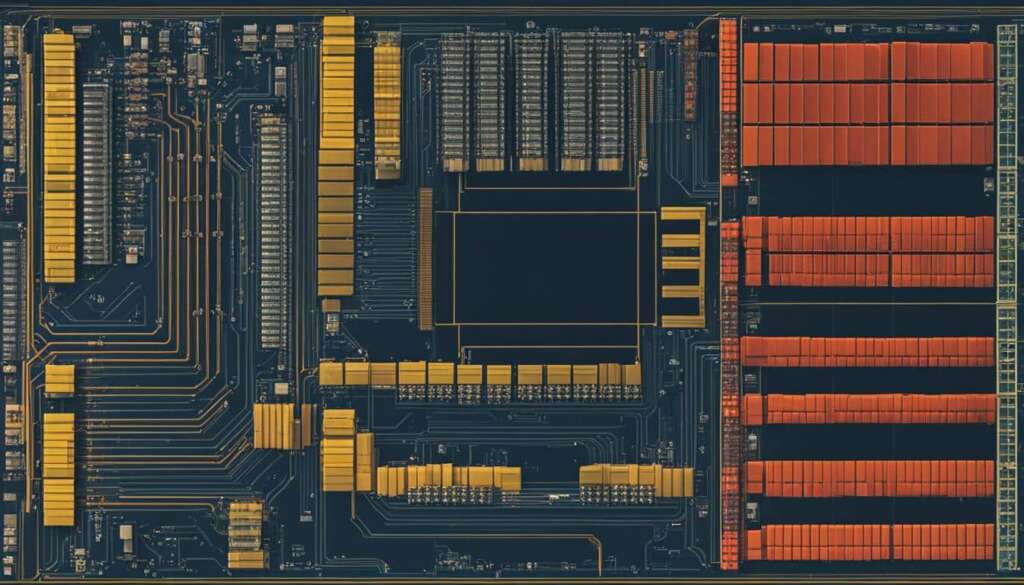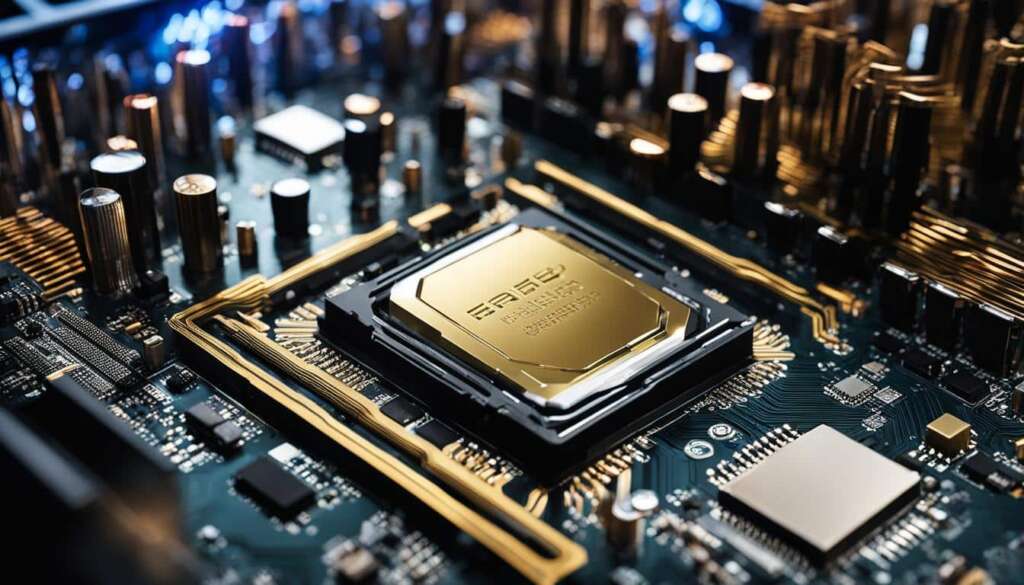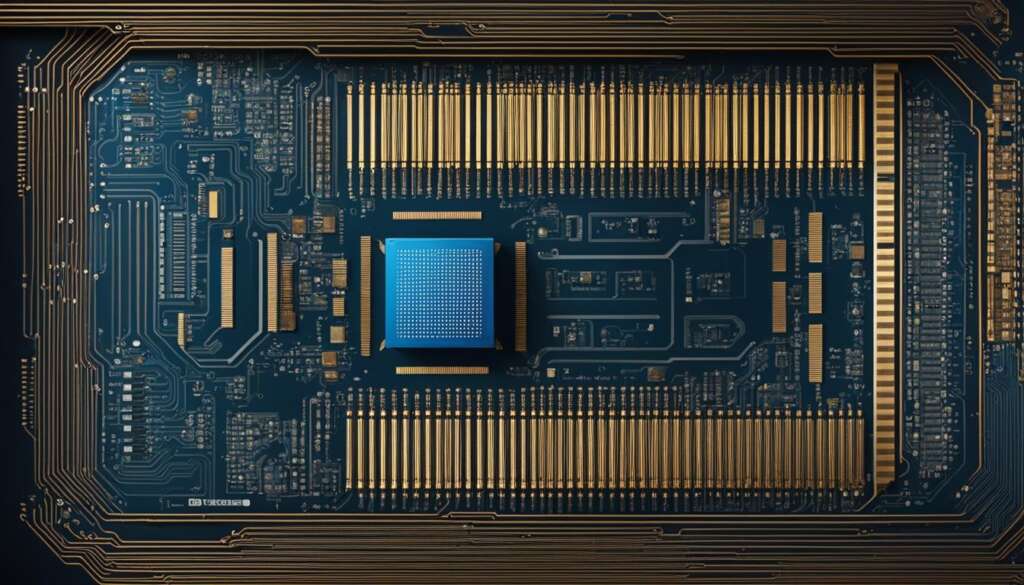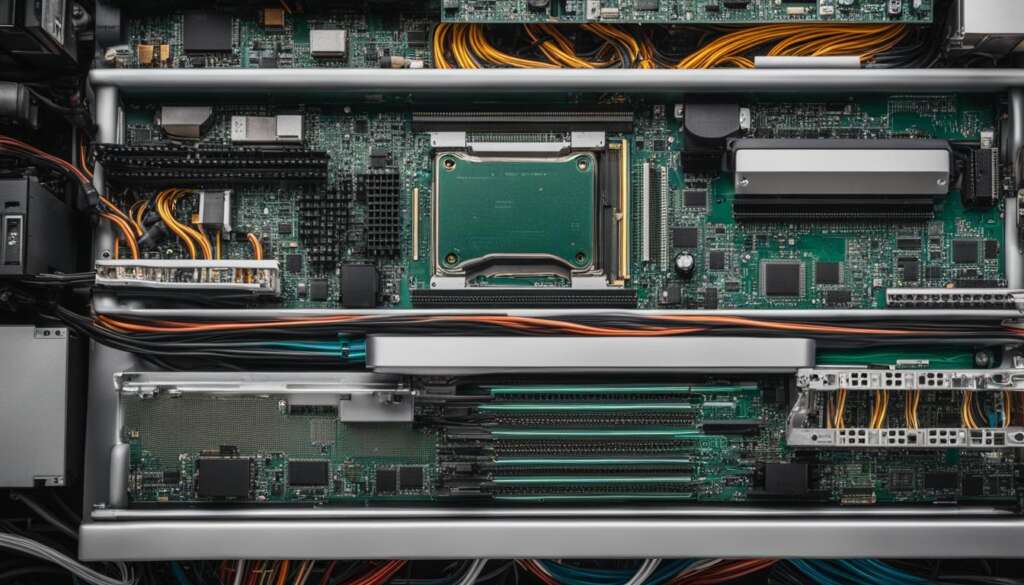Table of Contents
Processor architectures play a critical role in determining the performance and capabilities of computer systems. In this article, we delve into the world of processor architectures, specifically focusing on the differences between Complex Instruction Set Computers (CISC) and Reduced Instruction Set Computers (RISC).
When it comes to processor architectures, CISC and RISC take different approaches to executing instructions. CISC architectures aim to minimize the lines of assembly code required for tasks by incorporating complex instructions capable of performing multiple operations simultaneously. On the other hand, RISC architectures prioritize simplicity and efficiency, utilizing a reduced set of simple instructions.
This article will explore the advantages and disadvantages of each architecture, as well as their impact on hardware choices. So, whether you’re a tech enthusiast or a computer science student, join us as we dive into the fascinating world of processor architectures.
What Are Processor Architectures?
Processor architectures, also known as CPU architectures, are the designs and structures that dictate how microprocessors function and carry out tasks. These architectures determine how instructions are processed, data is stored and accessed, and how the CPU interacts with other hardware components. Two prominent types of processor architectures are CISC (Complex Instruction Set Computers) and RISC (Reduced Instruction Set Computers).
CISC and RISC architectures have different approaches to executing instructions. CISC aims to complete tasks using as few lines of assembly code as possible. It achieves this by incorporating complex instructions that can perform multiple operations simultaneously. These instructions are designed to reduce the need for explicit loading and storing functions, making it easier for programmers to write code in high-level languages.
On the other hand, RISC processors focus on simplicity and efficiency by using a reduced set of simple instructions. Instead of complex instructions, RISC architectures rely on a series of basic instructions that perform individual operations. This approach allows for faster execution of instructions, but it requires more instructions to complete complex tasks.
The CISC Approach
The Complex Instruction Set Computers (CISC) architecture takes a unique approach to processing tasks efficiently. It aims to minimize the lines of assembly code required by incorporating complex instructions that can perform multiple operations simultaneously. By doing so, CISC reduces the need for explicit loading and storing functions, making it easier for programmers to write code in high-level languages.
CISC architectures prioritize hardware complexity and efficiency. They offer a wide range of instructions that can perform complex operations in a single step. These instructions are designed to handle tasks that would otherwise require multiple instructions in other architectures. As a result, CISC processors can execute complex tasks in a shorter amount of time.
One of the main advantages of the CISC architecture is its ability to handle more sophisticated instructions. This reduces the need for additional instructions, resulting in shorter assembly code. Additionally, CISC processors use less random access memory (RAM) for storing instructions compared to other processor architectures.
| Advantages of CISC Architecture |
|---|
| Shorter assembly code |
| Reduced RAM usage for instructions |
| Easier translation from high-level languages to assembly |
RISC: Streamlined Simplicity
The RISC (Reduced Instruction Set Computers) approach to processor architecture focuses on simplicity and efficiency. Unlike CISC architectures that incorporate complex instructions, RISC architectures rely on a reduced set of simple instructions to execute tasks. This streamlined design allows for faster execution of instructions, but it also requires more instructions to complete complex tasks.
RISC architectures prioritize software simplicity and execution speed. By using basic instructions that perform individual operations, RISC processors eliminate the need for complex hardware. This simplification enables more efficient use of general-purpose registers and optimizes CPU performance. Additionally, the uniform execution time of RISC instructions results in consistent performance.
It is worth noting that the development of RISC processors faced obstacles in gaining commercial adoption, particularly in the face of competition from CISC architectures, such as those offered by Intel. However, as technology advanced and costs decreased, RISC became a more viable option.
Advantages of RISC Architecture
RISC architectures offer several advantages. First, they allow for the execution of instructions in a single clock cycle, leading to faster processing times. The simplified hardware design of RISC also enables efficient use of general-purpose registers, reducing the need for additional memory access.
Furthermore, RISC architectures facilitate pipelining, a technique that allows the CPU to handle multiple instructions simultaneously. This increases overall efficiency and performance. Additionally, RISC architectures benefit from straightforward instruction decoding, making them more suitable for embedded systems and mobile devices.
| Advantages of RISC Architecture |
|---|
| Execution of instructions in a single clock cycle |
| Efficient use of general-purpose registers |
| Pipelining for enhanced performance |
| Simplified instruction decoding |
CISC vs RISC: A Comparison of Processor Architectures
When comparing CISC and RISC architectures, it becomes clear that they have different priorities. CISC emphasizes hardware complexity and efficiency, while RISC prioritizes software simplicity and execution speed. Let’s take a closer look at the key differences between these two processor architectures.
Table: CISC vs RISC Comparison
| Architecture | Key Characteristics | Advantages | Disadvantages |
|---|---|---|---|
| CISC | – Incorporates complex instructions – Fewer lines of assembly code – Supports high-level languages |
– Shorter assembly code – Reduced RAM usage – Easier translation from high-level languages |
– Larger code sizes – Lower clock speeds |
| RISC | – Relies on basic instructions – Faster execution of instructions – Simplified hardware design |
– Instructions executed in a single clock cycle – Efficient use of general-purpose registers – Enables CPU performance optimization |
– More instructions to complete complex tasks – Limited software support in the past |
RISC architectures, such as RISC-V, are gaining traction due to their simplified design, faster execution, and flexibility for customization.
In terms of hardware complexity, CISC architectures tend to have larger code sizes and lower clock speeds. On the other hand, RISC architectures have smaller code sizes and higher clock speeds. The use of complex instructions in CISC allows for efficient execution of tasks that can be completed in a single instruction. This makes CISC architectures suitable for applications that require more complex operations within a single instruction, such as mathematical calculations or data manipulation.
RISC architectures, on the other hand, focus on simplicity and efficiency. By relying on a reduced set of simple instructions, RISC processors can execute instructions in a single clock cycle, resulting in faster overall execution. This simplicity also leads to a simplified hardware design, which allows for more general-purpose registers and efficient use of transistors for memory.
While both CISC and RISC architectures have their strengths and weaknesses, the choice between them ultimately depends on the specific requirements of the application or workload. As technology advances, RISC architectures like RISC-V are gaining popularity due to their open nature, potential for customization, and overall performance advantages.
Advantages of CISC Architecture
The CISC architecture, short for Complex Instruction Set Computers, offers several advantages that make it a popular choice in certain scenarios.
One of the main advantages of CISC architecture is the ability to execute complex tasks using a single instruction. This reduces the need for multiple instructions and simplifies the coding process, allowing programmers to write shorter assembly code. As a result, CISC architectures enable more efficient execution of tasks, as complex operations can be performed in a single step.
Another advantage of CISC architecture is its ability to reduce RAM usage for instructions. With complex instructions that can perform multiple operations simultaneously, CISC processors require fewer instructions to complete tasks compared to other architectures. This results in lower memory requirements, which can be especially beneficial in memory-constrained environments.
The following table summarizes some of the advantages of CISC architecture:
| Advantages of CISC Architecture |
|---|
| Efficient execution of complex tasks |
| Shorter assembly code |
| Reduced RAM usage for instructions |
| Easier translation from high-level languages to assembly |
In addition, the emphasis on complex instructions in CISC architecture allows for easier translation from high-level languages to assembly. CISC processors are designed to support a wide range of high-level language constructs, reducing the need for manual translation and making programming more accessible to developers.
Overall, the advantages of CISC architecture, such as shorter assembly code, reduced RAM usage for instructions, and easier translation from high-level languages, make it a compelling choice in certain situations where execution efficiency and code simplicity are critical factors.

Advantages of RISC Architecture
The RISC (Reduced Instruction Set Computer) architecture offers several advantages that make it a compelling choice for certain applications and workloads. By prioritizing simplicity and efficiency, RISC architectures provide a range of benefits that contribute to improved performance and flexibility.
1. Single Clock Cycle Execution
One of the key advantages of RISC architectures is the ability to execute instructions in a single clock cycle. This means that each instruction completes its execution in a fixed amount of time, resulting in consistent performance. With shorter instruction execution times, RISC processors can handle more instructions per second, leading to higher overall processing speeds.
2. Simplified Hardware Design
RISC architectures employ a reduced set of simple instructions, which allows for a simplified hardware design. By eliminating complex instructions, RISC processors require fewer transistors and hardware components, making them more cost-effective to produce. The simplified design also reduces the risk of hardware errors and simplifies the debugging process.
3. Efficient Use of General-Purpose Registers
RISC architectures dedicate a larger number of general-purpose registers for computations and data storage. This allows for improved code optimization and efficient manipulation of data. By minimizing the need for memory access, RISC processors can perform operations more quickly and effectively, resulting in enhanced performance.
Overall, RISC architectures provide advantages such as single clock cycle execution, simplified hardware design, and efficient use of general-purpose registers. These benefits contribute to improved performance, higher processing speeds, and cost-effective hardware production. However, it’s important to consider the specific requirements of the application or workload when selecting a processor architecture, as both CISC and RISC have their own strengths and weaknesses.
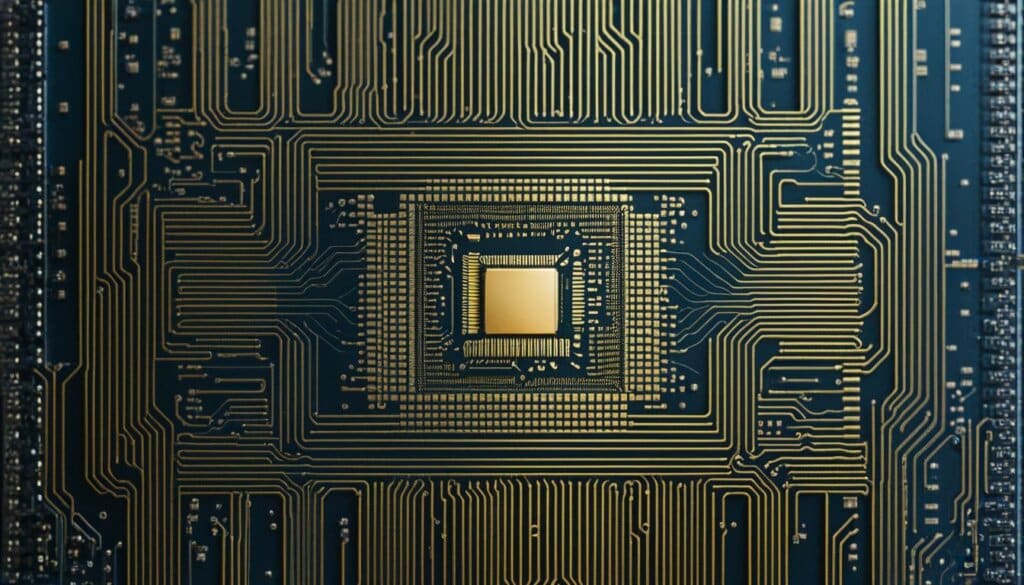
RISC Roadblocks
While RISC architectures, such as RISC-V, offer numerous advantages, they faced several challenges in gaining widespread commercial adoption in their early years. One of the primary obstacles was the lack of software support for RISC processors. At the time, many software applications and operating systems were designed for the more prevalent CISC architecture, making it difficult for RISC to establish a foothold in the market.
Furthermore, competition from CISC architectures, particularly those offered by Intel, posed another challenge for RISC. Intel’s x86 processors dominated the market and had a significant advantage in terms of market share and compatibility with existing software. This dominance made it challenging for RISC architectures to compete effectively and gain acceptance among computer manufacturers and software developers alike.
However, as technology advanced and costs decreased, RISC architectures became more viable options. The increased processing power and improved performance of RISC processors, coupled with growing software support, gradually eroded the barriers that hindered their adoption. Today, RISC architectures, particularly the open-source RISC-V, are gaining momentum in the electronics industry, offering flexibility, customizability, and the potential for innovation.
| RISC Roadblocks | How They Were Overcome |
|---|---|
| Lack of software support for RISC processors | Advancements in software development and increasing adoption of RISC-specific tools and libraries. |
| Competition from dominant CISC architectures | Technological advancements in RISC processor performance and the emergence of open-source alternatives like RISC-V. |
| Market acceptance and compatibility challenges | Lower costs, improved software support, and the proven benefits of RISC architectures. |
The Overall RISC Advantage

When comparing CISC and RISC processor architectures, it becomes evident that RISC offers several significant advantages. Its simplified design and focus on executing instructions in a uniform amount of time contribute to consistent performance and improved efficiency. By utilizing simple instructions, RISC architectures reduce the need for complex hardware, enabling more efficient use of transistors for memory and allowing for more general-purpose registers.
This streamlined approach results in higher clock speeds and smaller code sizes, facilitating faster execution of instructions. With faster execution and simplified hardware design, RISC processors can optimize CPU performance and enhance overall efficiency. Additionally, the reduced instruction set of RISC architectures lends itself well to pipelining, a technique that further boosts performance by allowing the concurrent execution of multiple instructions.
In summary, the overall advantage of RISC architecture lies in its ability to deliver consistent performance, thanks to its uniform execution time for instructions. With its simplified design, efficient use of resources, and potential for optimization, RISC offers a compelling solution for various applications and workloads.
Introduction to RISC-V
RISC-V is an open-source instruction set architecture (ISA) that has been gaining significant attention in the electronics industry. It offers flexibility and customizability, allowing developers to create custom processors specifically tailored to their unique workloads or requirements. What sets RISC-V apart is its open nature, making it accessible to anyone who wants to contribute to its development and innovation.
One of the key advantages of RISC-V is its open-source nature, which means that it is not controlled by any particular company or organization. This openness eliminates the need for royalties or licensing fees, significantly reducing costs for both individual developers and large-scale manufacturers. It also encourages collaboration and fosters a vibrant and diverse ecosystem of hardware and software innovations.
With RISC-V, developers have the freedom to create their own customized processor designs based on the open-source ISA. This enables them to optimize the architecture for their specific needs, resulting in improved performance and efficiency. Additionally, RISC-V supports a wide range of application domains, from embedded systems and IoT devices to high-performance computing and data centers.
Advantages of RISC-V:
- Flexibility and customizability
- Open-source nature
- No royalties or licensing fees
- Encourages collaboration and innovation
- Ability to create customized processor designs
- Supports a wide range of application domains
As RISC-V continues to gain popularity, it is expected to drive innovation and shape the future of processor architectures. Its open-source ISA and customizable nature provide opportunities for developers to push the boundaries of what is possible in the world of computing.
Conclusion
In conclusion, understanding the differences between Processor Architectures, specifically CISC and RISC, is crucial for making informed CPU Architecture Trends. While both have their advantages and disadvantages, RISC architectures, like RISC-V, are gaining traction in the electronics industry. These architectures offer a simplified design and faster execution, making them attractive for various applications. Additionally, RISC-V’s open nature allows for customization and innovation while reducing costs by eliminating royalties.
When considering hardware choices, the specific requirements of the application or workload should be taken into account. While CISC architectures may still hold value in certain scenarios, the trend is shifting towards RISC architectures due to their flexibility and potential for custom processors. The consistent performance and efficient use of resources in RISC architectures make them an appealing choice for modern computing needs.
As CPU Architecture Trends continue to evolve, it is important to stay updated on the latest developments. The electronics industry is witnessing a shift towards RISC architectures, driven by the advantages they offer. By keeping a pulse on these trends, individuals and businesses can make informed decisions when selecting processor architectures that best suit their needs.
FAQ
What are processor architectures?
Processor architectures, also known as CPU architectures, are the designs and structures that determine how microprocessors function and carry out tasks.
What is the difference between CISC and RISC architectures?
CISC (Complex Instruction Set Computers) architectures use complex instructions to complete tasks efficiently, while RISC (Reduced Instruction Set Computers) architectures use a reduced set of simple instructions for faster execution.
What are the advantages of CISC architecture?
CISC architectures offer advantages such as shorter assembly code, reduced RAM usage for instructions, and easier translation from high-level languages to assembly.
What are the advantages of RISC architecture?
RISC architectures offer advantages including the ability to execute instructions in a single clock cycle, simplified hardware design, and efficient use of general-purpose registers.
What were the challenges faced by RISC architecture?
RISC architecture initially faced challenges due to lack of software support and competition from CISC architecture, especially from Intel. However, as technology advanced and costs decreased, RISC became more viable.
What is the overall advantage of RISC architecture?
The overall advantage of RISC architecture lies in its ability to execute instructions in a uniform amount of time, resulting in consistent performance. It also allows for more general-purpose registers and efficient use of transistors for memory.
What is RISC-V?
RISC-V is an open-source instruction set architecture (ISA) that offers flexibility and customizability. It allows for the development of custom processors tailored to specific workloads and reduces costs by eliminating the need for royalties.

